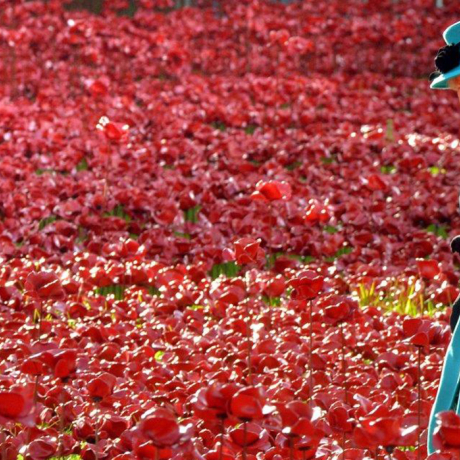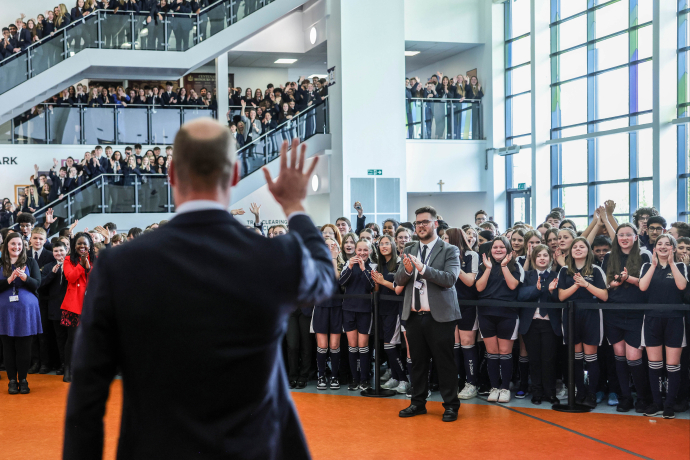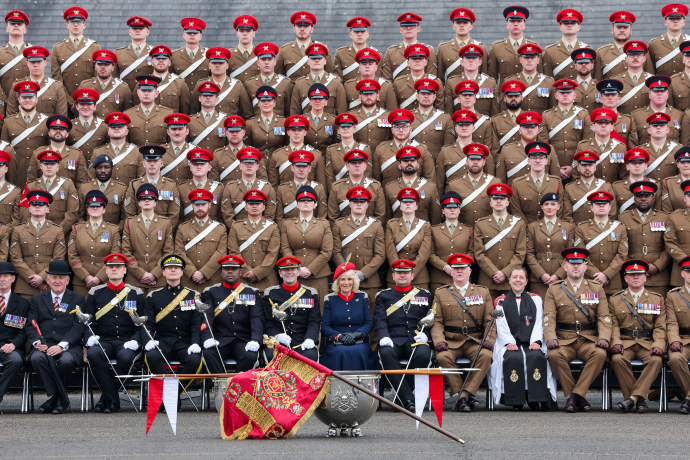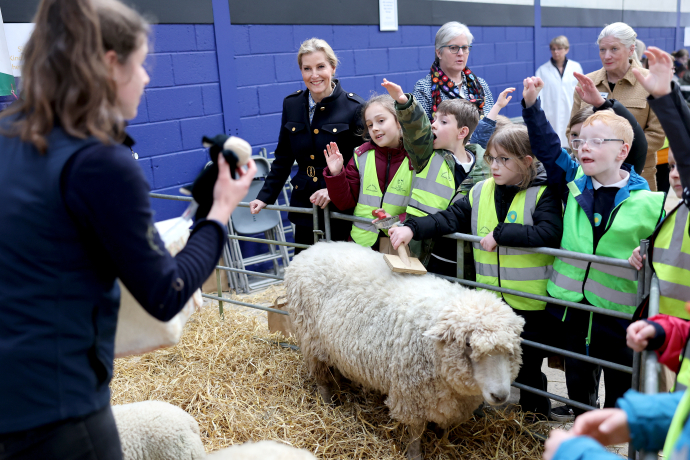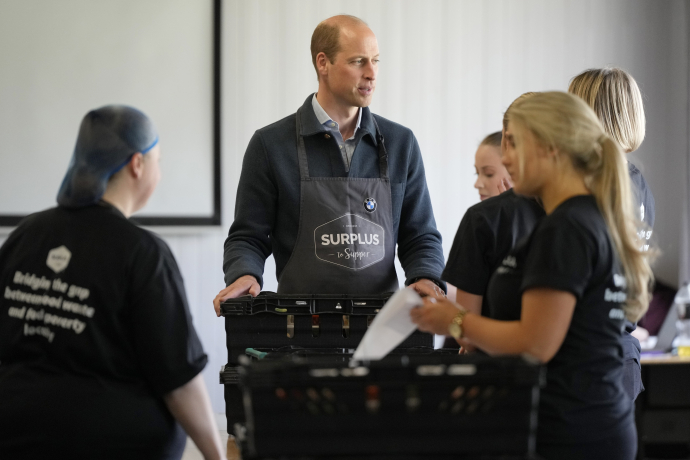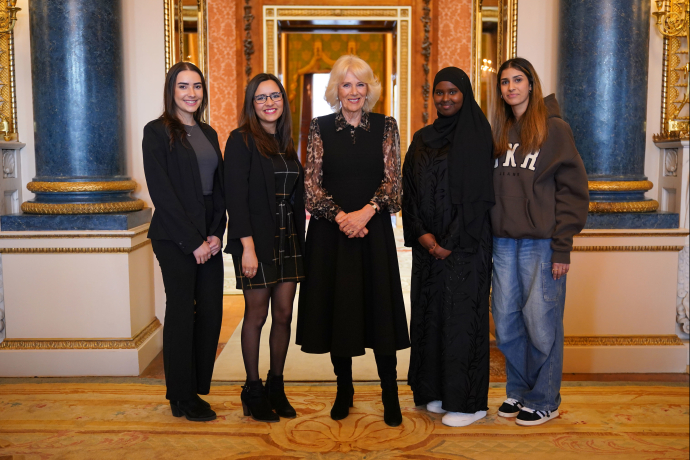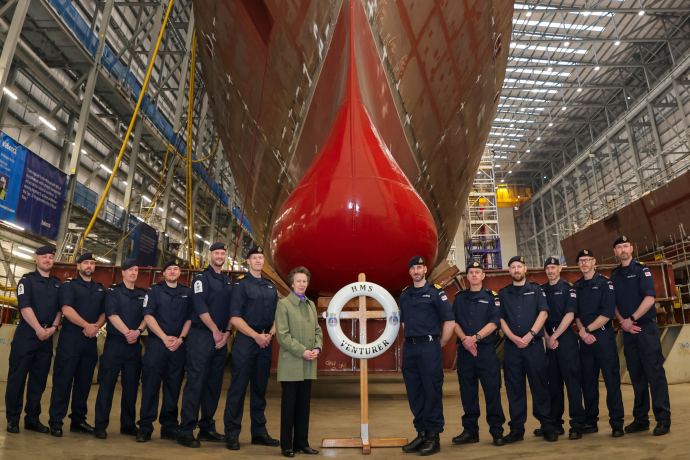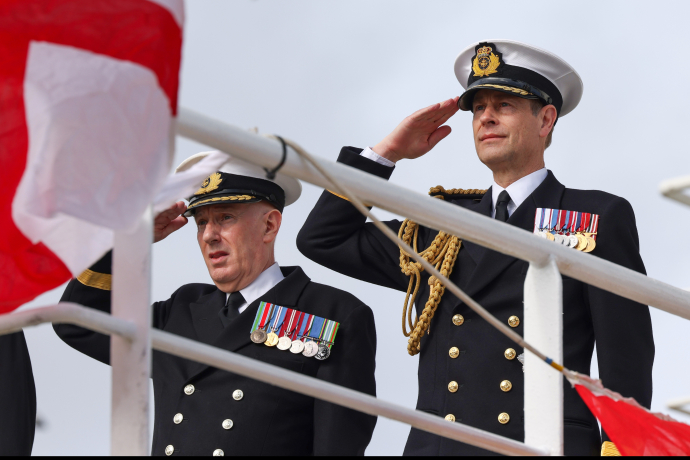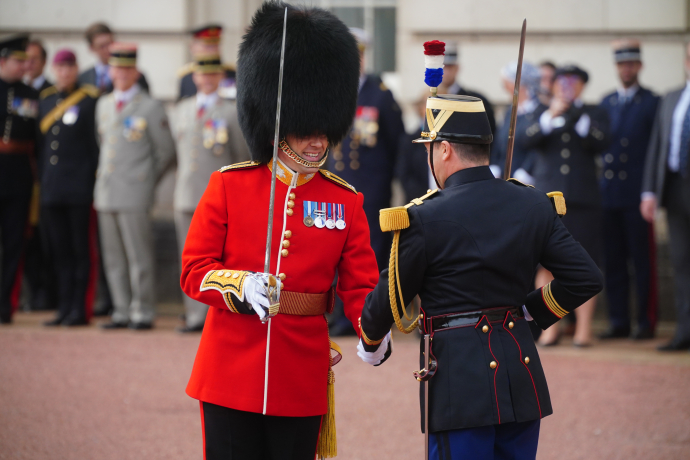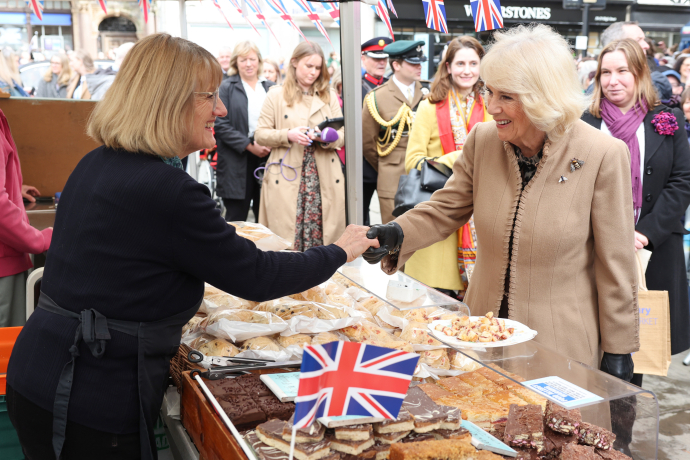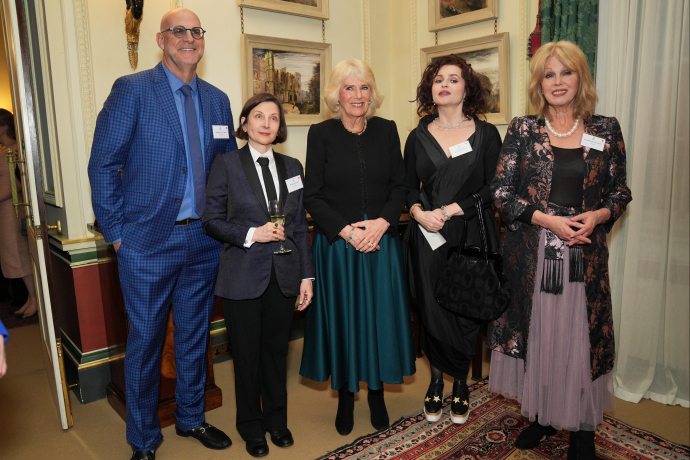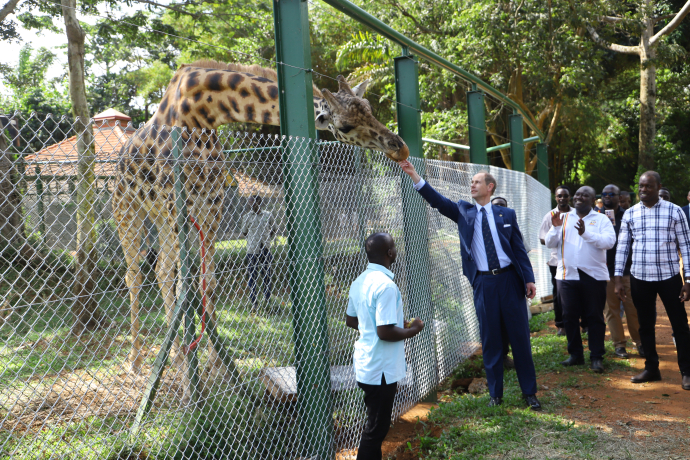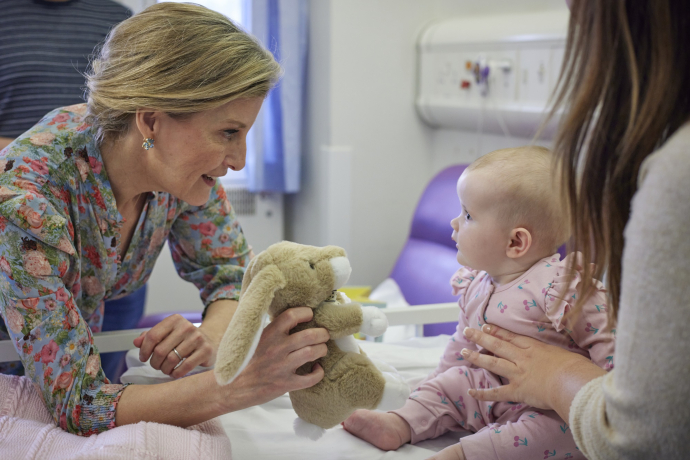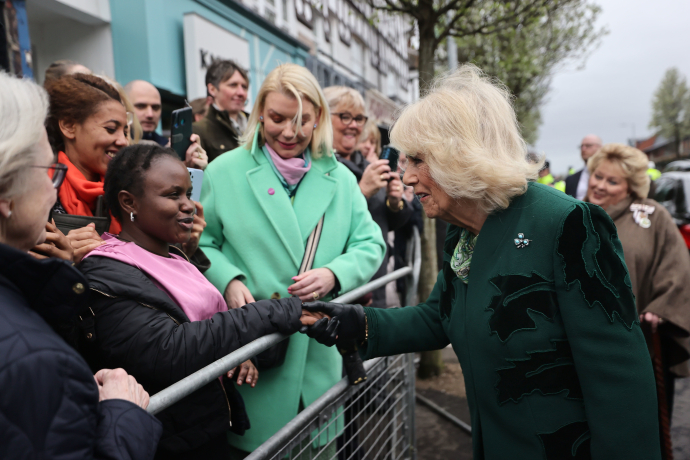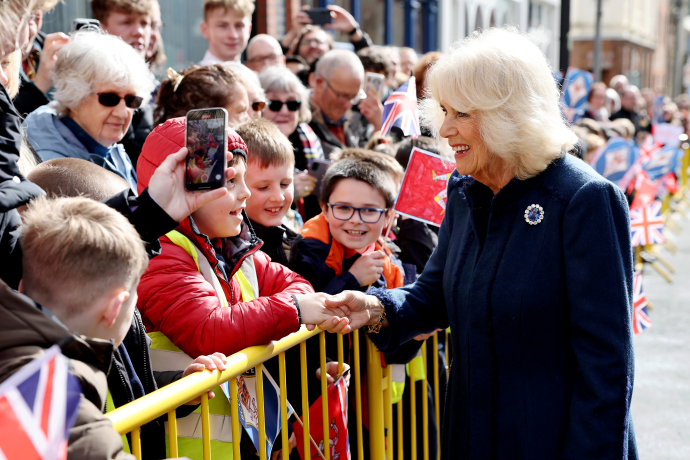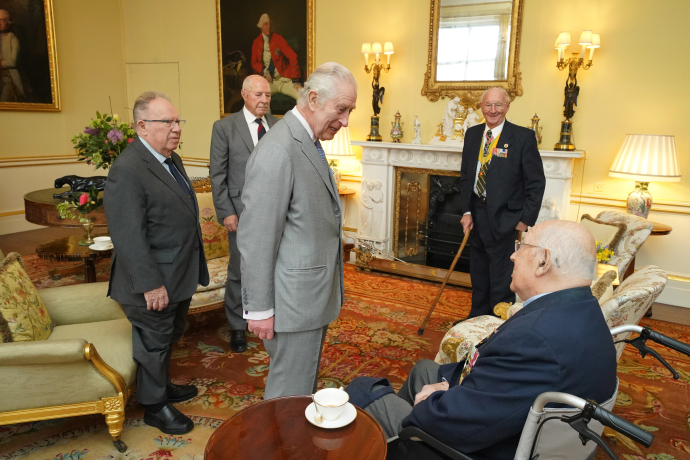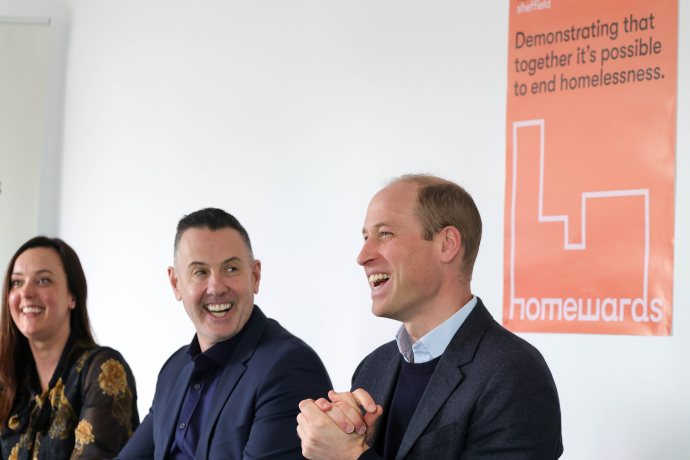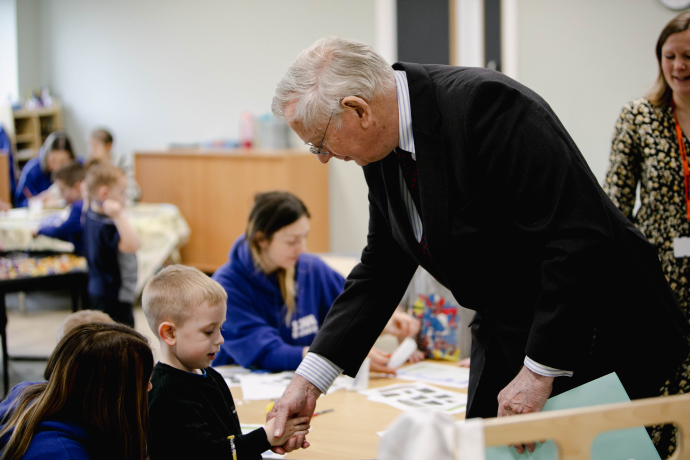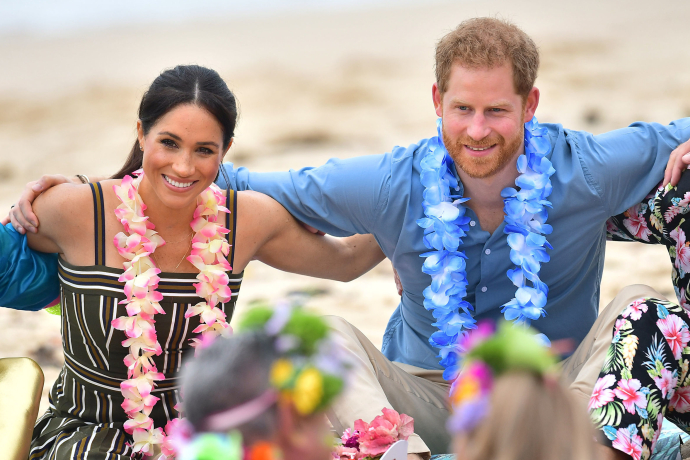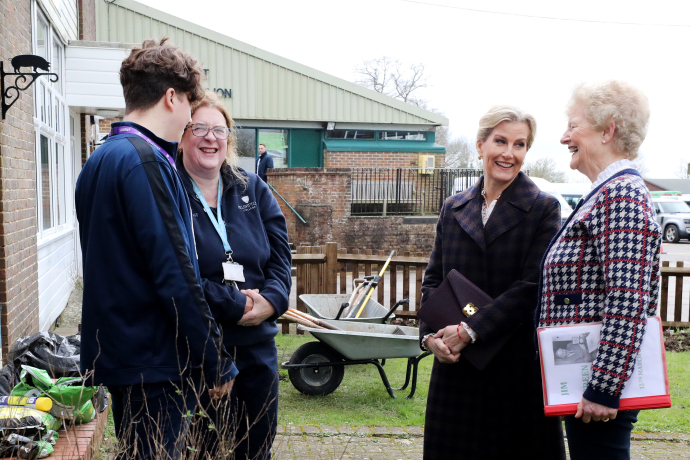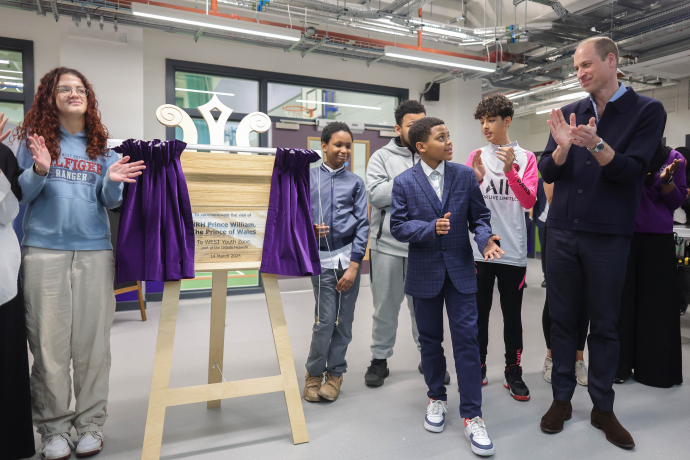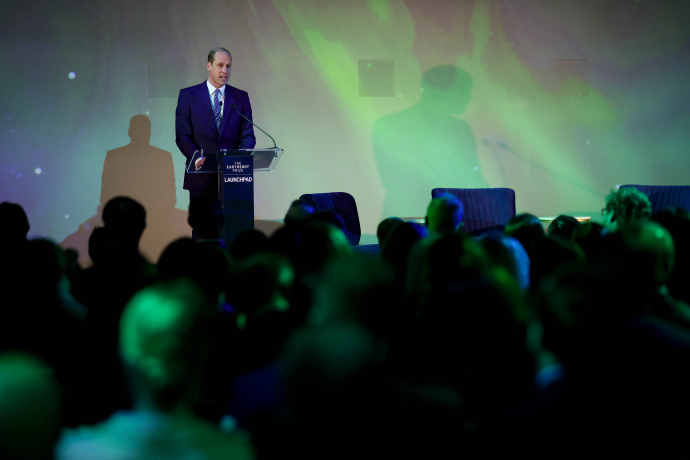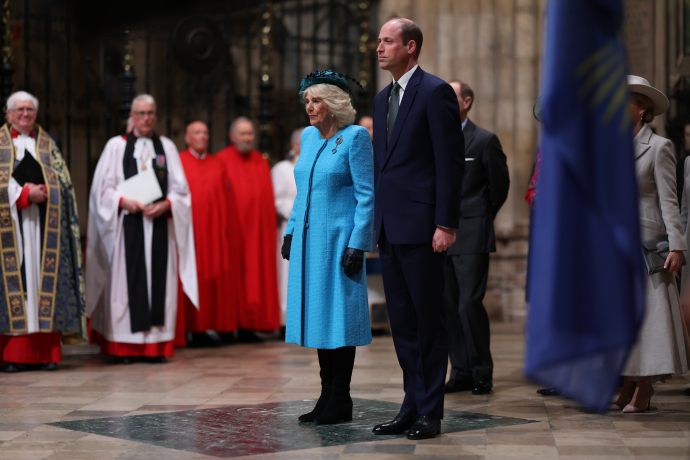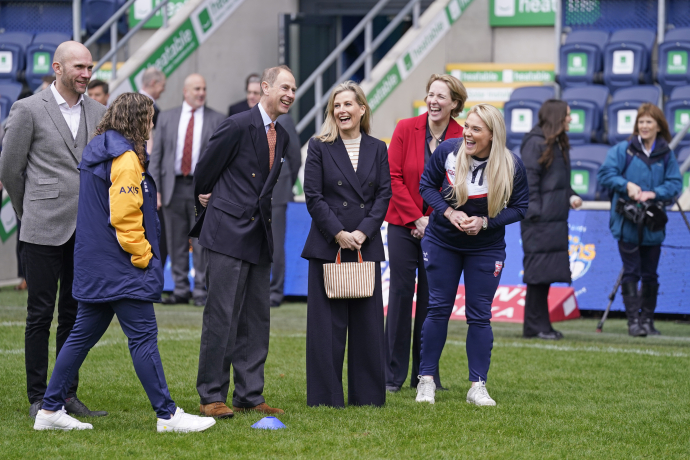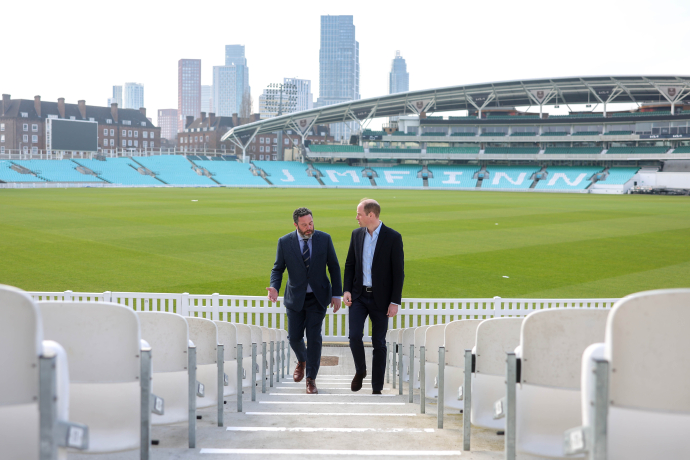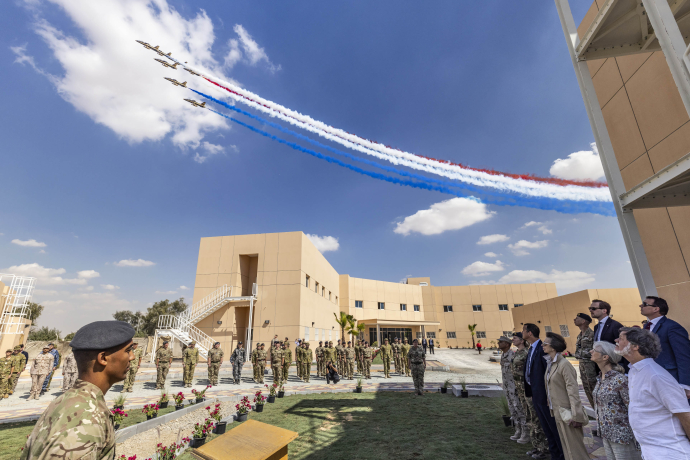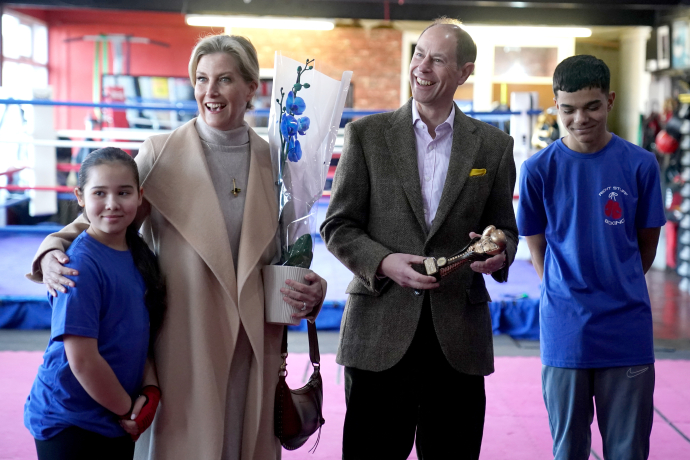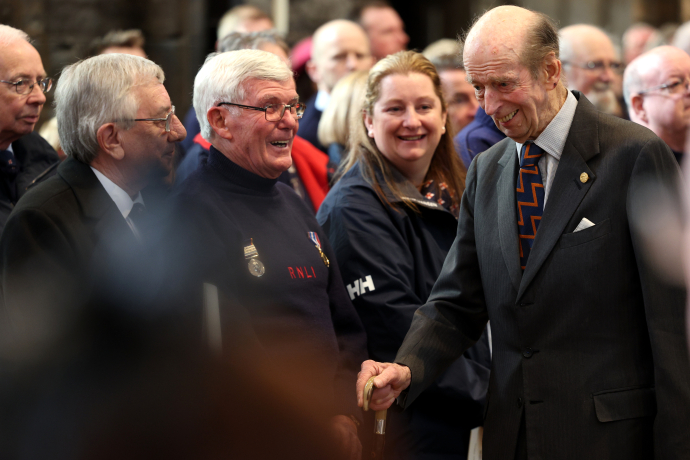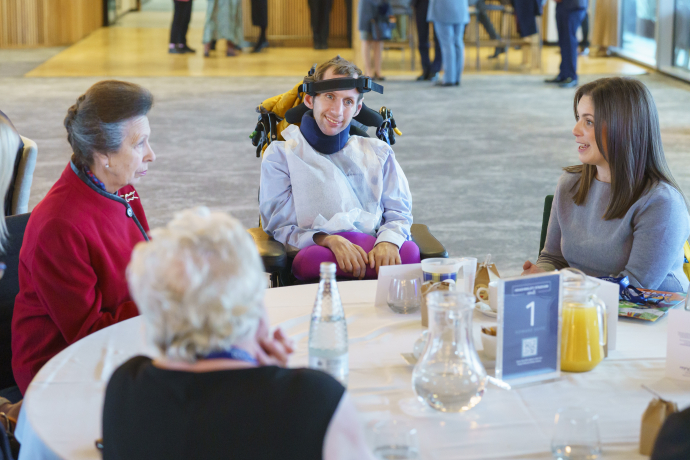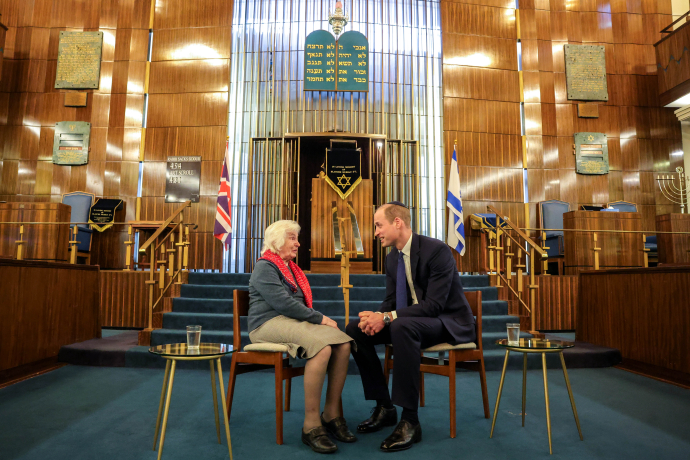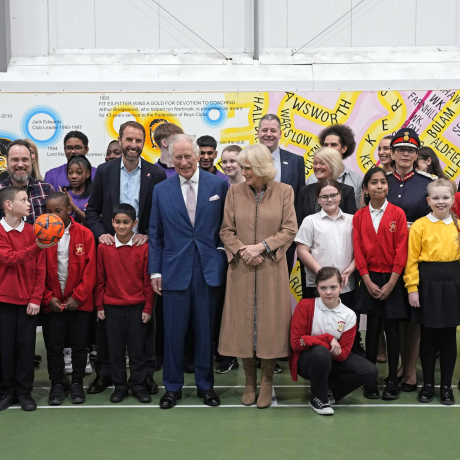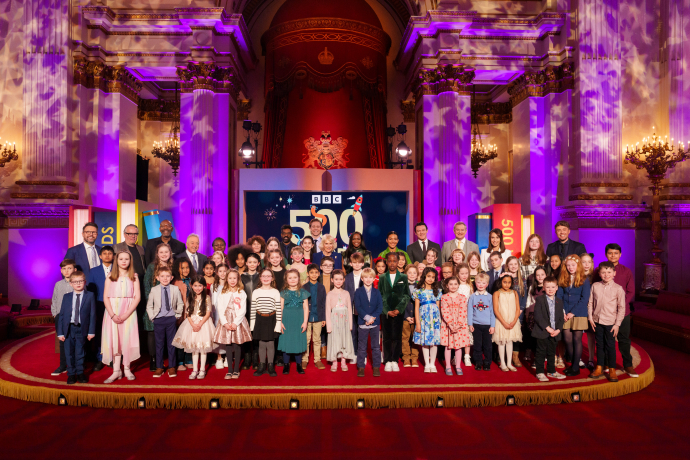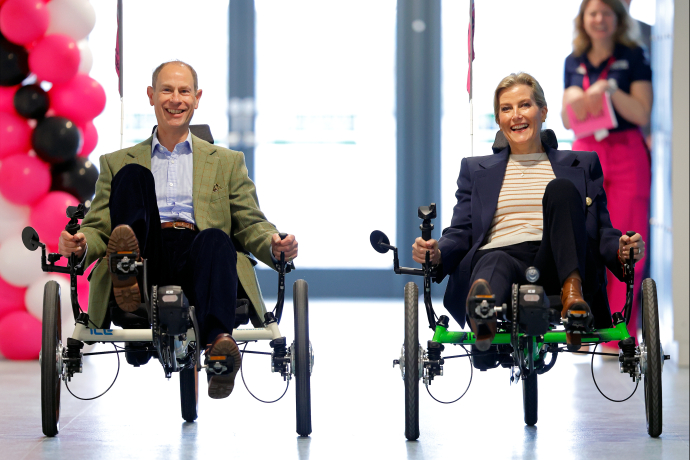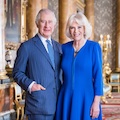When the Armistice was signed on the 'eleventh hour of the eleventh day of the eleventh month' in 1918, Buckingham Palace became a focal point for the celebrations.
Joyous crowds waving Union Flags flocked down the Mall, where The Royal Family joined in with the celebrations.
The next day King George V, Queen Mary and Princess Mary attended a service of thanksgiving at St. Paul’s Cathedral.
Ever since that day, The Royal Family have led the Nation in remembering and honouring those who made the ultimate sacrifice in all conflicts across the world.
Since 2014, The Queen and The Royal Family have been commemorating the centenary of the First World War, using the menu you can find out more about the different events that have taken place.
2014
In August 2014, The Royal Family undertook a number of events to commemorate 100 years since British Entry into the First World War.
Commemorating British Entry into the First World War
The Queen attended a Service of Commemoration at Crathie Kirk - her local place of worship when she is resident in Balmoral.
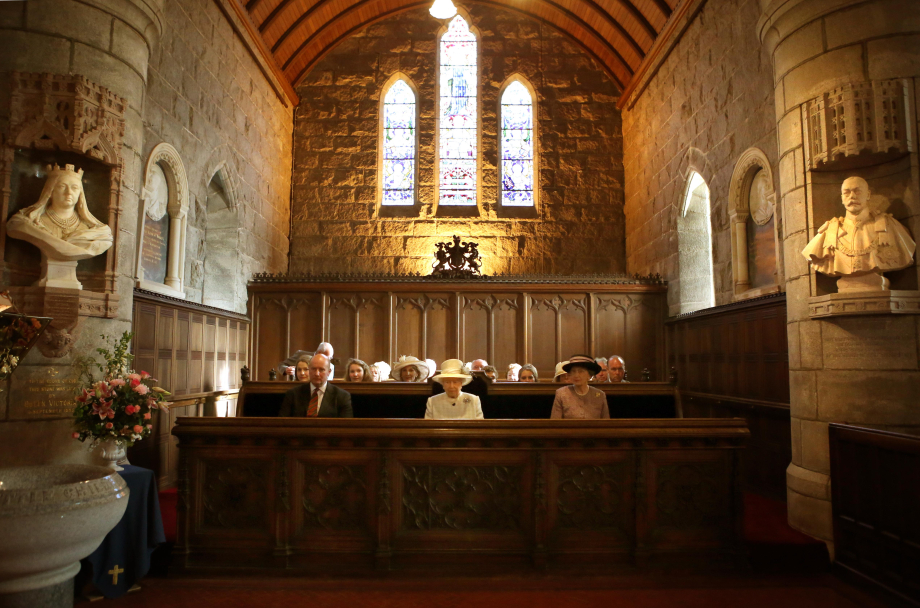
In Glasgow, The Duke of Rothesay (as The Prince of Wales is known in Scotland) joined the National Service of Commemoration for the Commonwealth, followed by a wreath laying in George Square.
On behalf of The Queen, The Duke and Duchess of Cambridge and The Duke of Sussex attended a Service of remembrance in Liege in Belgium, before visiting a Commonwealth War Graves Commission Cemetery in Mons.
“We were enemies more than once in the last century, and today we are friends and allies. We salute those who died to give us our freedom. We will remember them.”
Blood Swept Lands and Seas of Red
In October 2014 The Queen, accompanied by The Duke of Edinburgh, visited the Tower of London to view the installation, “Blood Swept Lands and Seas of Red”.
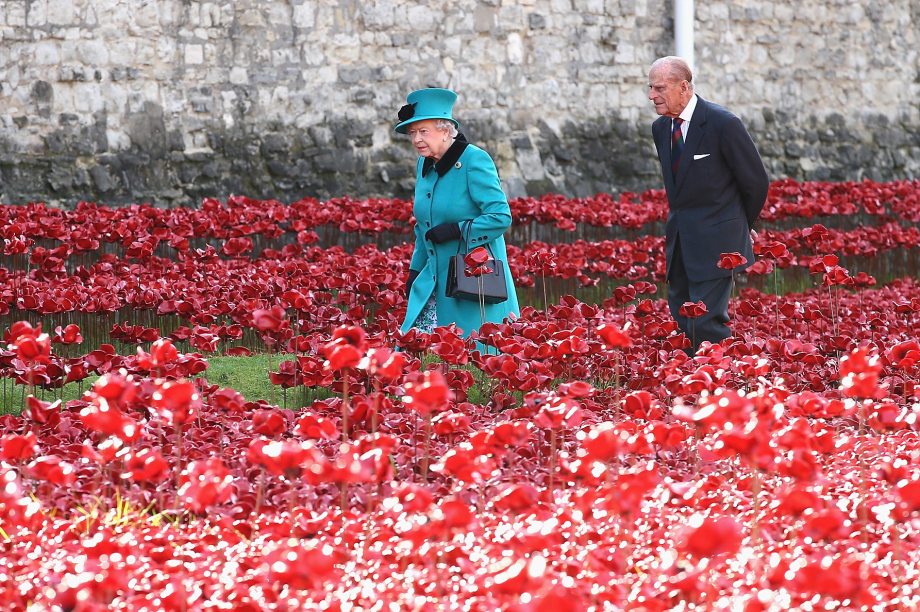
Created by ceramic artist Paul Cummins 888,246 filled the Tower’s moat, each representing a British Military fatality in the War – with the final poppy being placed on Armistice Day, 11 November 2014.
Remembrance 2014
In the lead up to Remembrance Day 2014, The Queen, The Duke of Edinburgh and The Duke of Cambridge joined The King of The Belgians and the Grand Duke of Luxembourg for the opening and dedication of the Flanders’ Field Memorial Garden at Wellington Barracks.
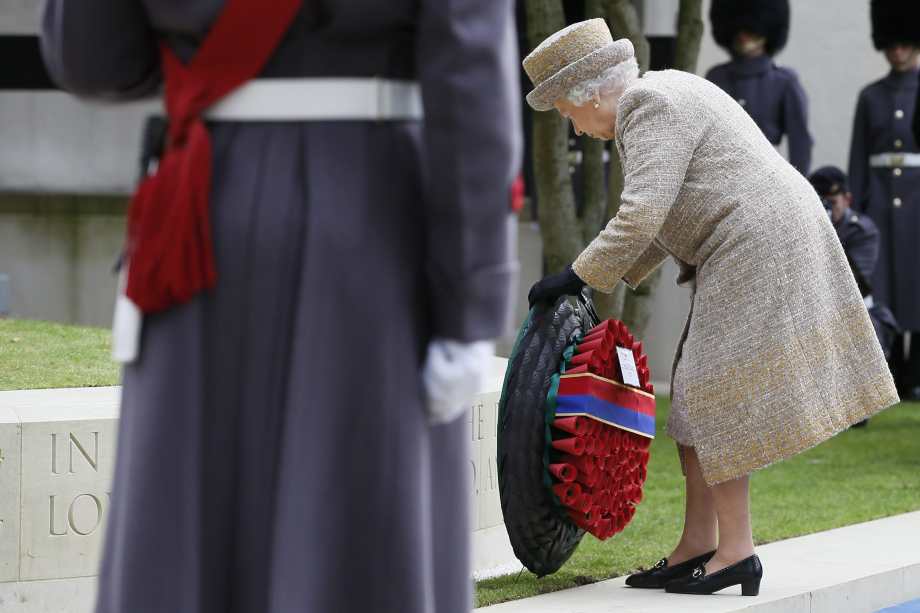
The new Garden was created with soil taken from 70 Battlefields and Commonwealth War Grave Cemeteries in Flanders where so many millions died. The ‘Sacred Soil’ was gathered in special ceremonies by Belgian and British school children.
At Westminster Abbey, The Duke of Sussex visited the Field of Remembrance. Started in November 1928, the Field of Remembrance features thousands of wooden crosses that carry a personal message to someone who lost their life.
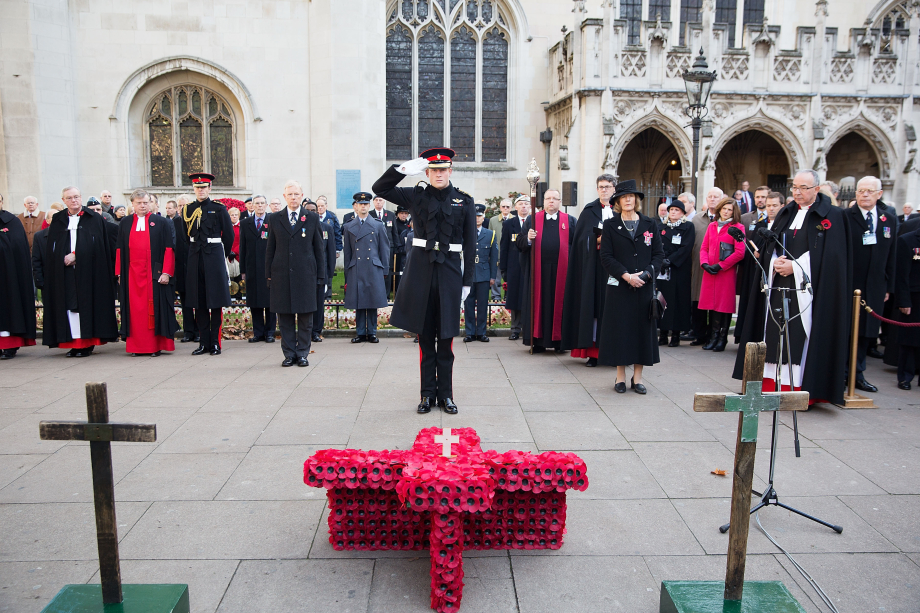
The Queen and The Royal Family also attended the annual Festival of Remembrance at the Royal Albert Hall – an event hosted by the Royal British Legion that commemorates all those who have lost their lives in conflicts.
On Remembrance Sunday, The Queen and The Royal Family laid wreaths at the Cenotaph, with The Duke of York taking the Salute at the March Past of Veteran and Civilian Organisations at Horse Guards Parade.
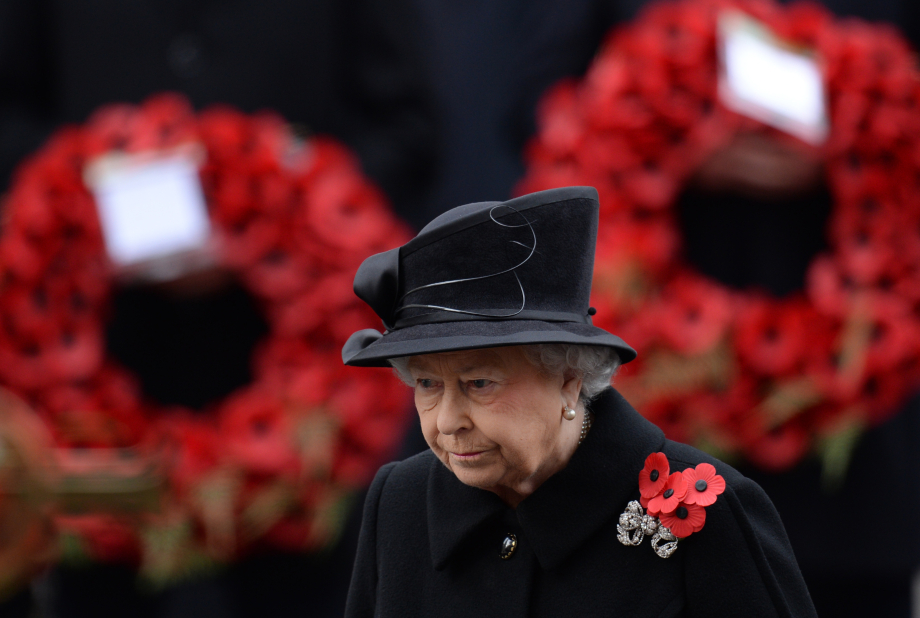
2015
2015 marked 100 years since the Gallipoli Campaign – an ultimately unsuccessful attempt by the Allies to control the sea route from Europe to Russia during World War One.
Commemorating Gallipoli
The start of the Campaign was commemorated by The Prince of Wales and The Duke of Sussex, who visited Turkey to attend a Remembrance Service and meet descendants of those who served.
Their Royal Highnesses also remembered the Australian contribution to the Gallipoli Campaign on ANZAC day as they joined the Australian Service of Thanksgiving at Lone Pine. The Battle of Lone Pine was one of the most famous assaults of the Campaign, and was fought between Australia and the Ottoman Empire between 6-10 August 1915.
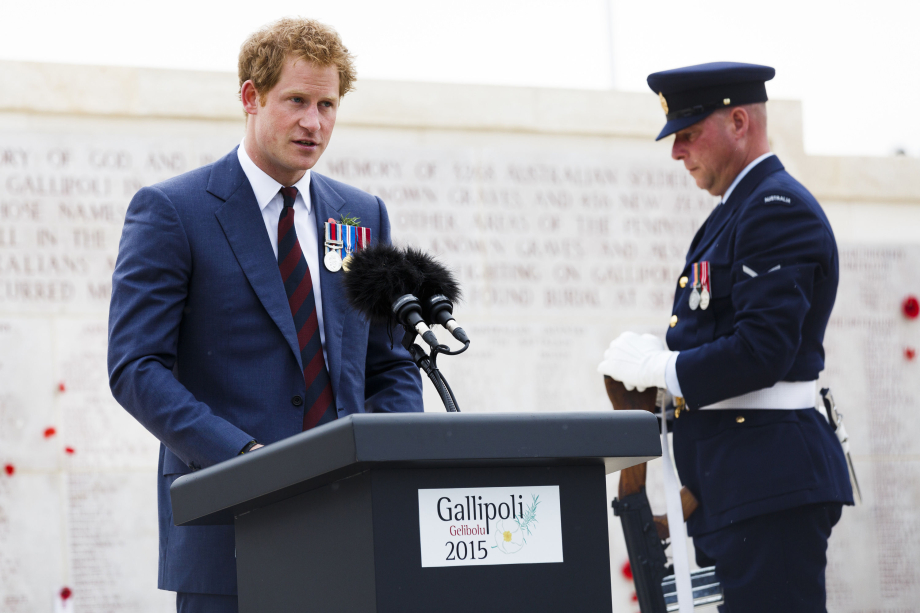
In April 2015 The Queen, accompanied by The Duke of Edinburgh and The Duke of Cambridge attended the wreath-laying ceremony at the Cenotaph to commemorate ANZAC Day and the Centenary of the Gallipoli Campaign.
In May, The Princess Royal joined the commemorations on the 100th anniversary of the Quintinshill Rail Disaster in Gretna Green.
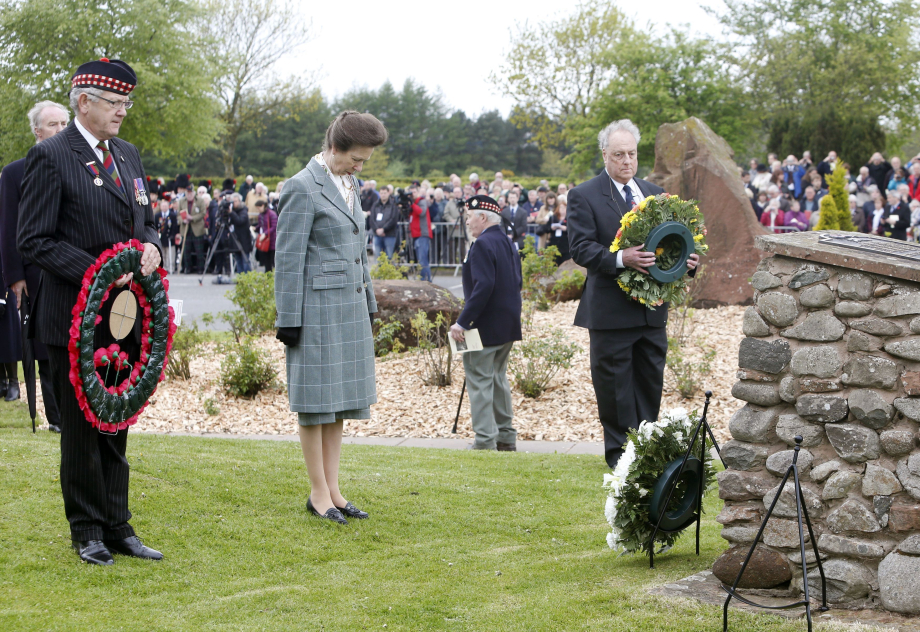
Remembering the sacrifices of rural communities
In Cabrach, located in rural Moray in Scotland, The Prince of Wales laid a wreath at a new memorial cairn built by the community. It honours the local soldiers from the Moray farming community and neighbouring parishes at Rhynie, Lumsden and Dufftown.
The centenary of Edith Cavell's death
To mark 100 years since the death of Edith Cavell, The Princess Royal unveiled a bust the British nurse who smuggled more than 200 Allied troops out of Belgium. Edith cared for soldiers from both sides, an act that led to her execution by a German firing squad on 12 October 1915.
Remembrance 2015
In November, The Duke of Edinburgh was joined by his grandson, The Duke of Sussex, to visit the Field of Remembrance at Westminster Abbey and lay a Cross of Remembrance.
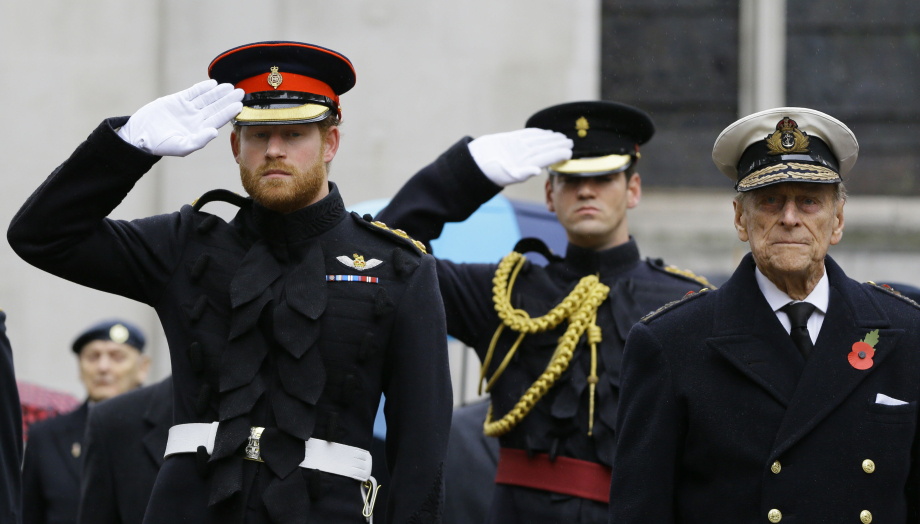
The Queen once again led the nation on remembrance Sunday, as a wreath was laid at the Cenotaph. In 2015 Her Majesty was joined by His Majesty King Willem-Alexander of the Netherlands, who was invited as part of 70th anniversary of the Dutch Liberation at the end of World War Two.
The Prince of Wales and Duchess of Cornwall were in Australia and on 11 November they attended the National Remembrance Ceremony in Canberra.
2016
To mark the 100th anniversary of the final withdrawal from the Gallipoli Peninsula, The Queen and The Duke of Edinburgh laid wreaths at the War Memorial Cross at Sandringham.
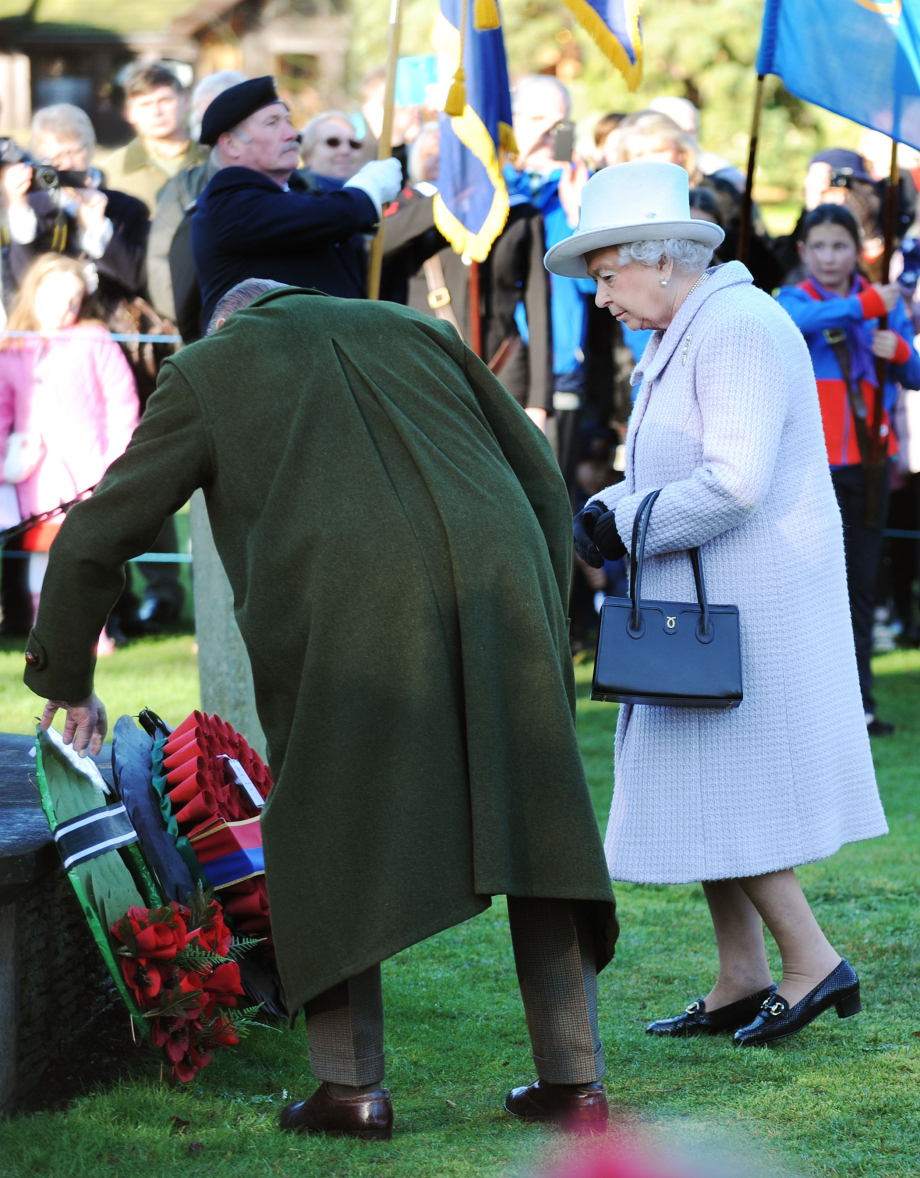
Commemorating the Battle of Jutland
2016 marked 100 years since the Battle of Jutland, which was the largest naval battle of the First World War that involved 250 ships and around 100,000 men – including Prince Albert, the future George VI.
The commemorations started in May, with The Princess Royal opening the “36 Hours: Jutland 1916, the Battle what Won the War” exhibition at National Museum of the Royal Navy, Portsmouth.
The events continued with The Duke of York visiting HMS Duncan in London and The Princess Royal and Vice Admiral Sir Tim Laurence joining commemoration events in Scotland. Her Royal Highness laid a wreath at the Cross of Sacrifice and visited graves at South Queensferry Cemetery.
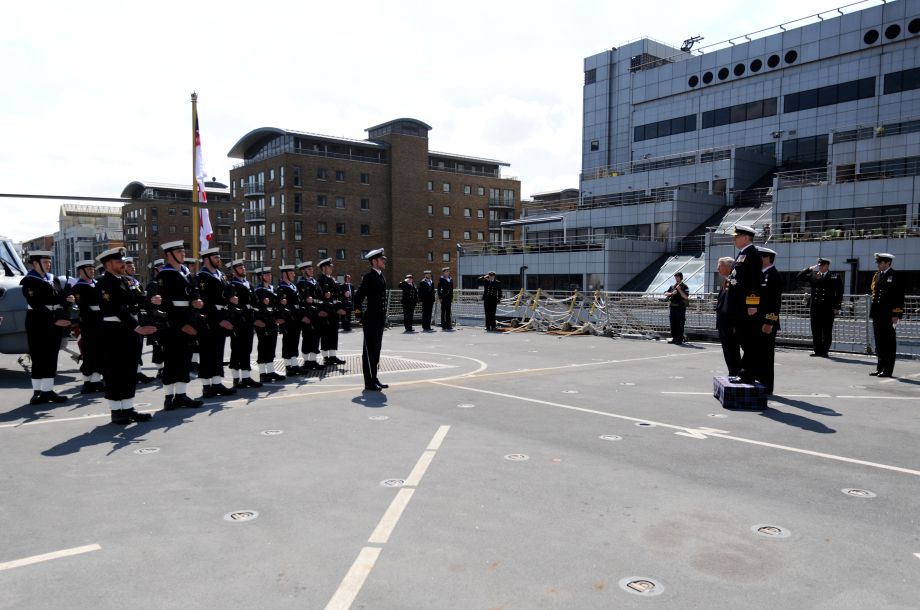
Representing The Duke of Edinburgh, The Princess Royal also attended a Service in St Magnus Cathedral, Kirkwall and Commemorative event at Lyness Royal Naval Cemetery.
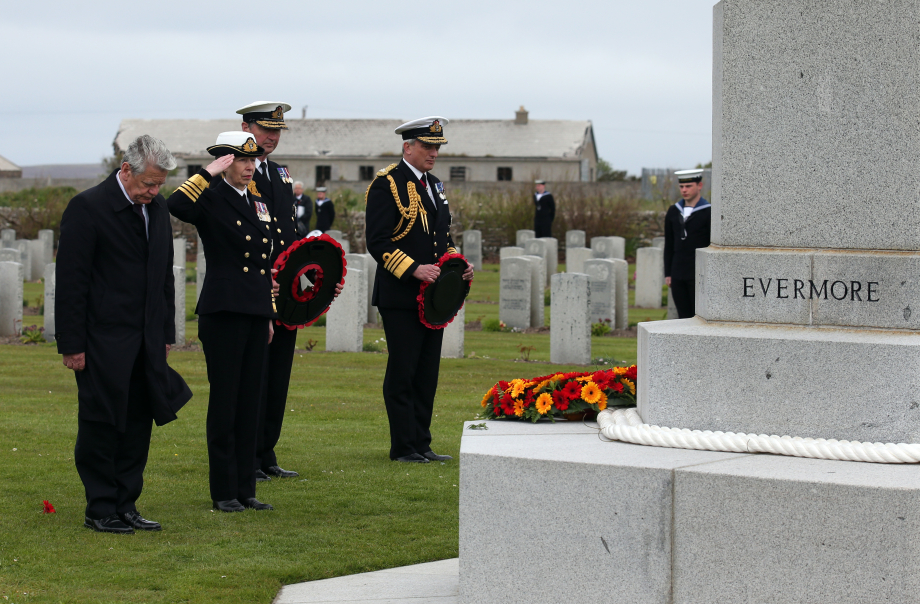
The Duke of Kent, Patron of the Commonwealth War Graves Commission, laid a wreath at the Naval Memorial at Laboe, Schleswig-Holstein in mark the Centenary of the battle.
The centenary of the Battle of the Somme
2016 also marked the Somme Centenary, with The Royal Family attending a number of events – starting with an even vigil at Westminster Abbey that was attended by The Queen and The Duke of Edinburgh. Following the Service, an overnight vigil around the Grave of the Unknown Warrior.
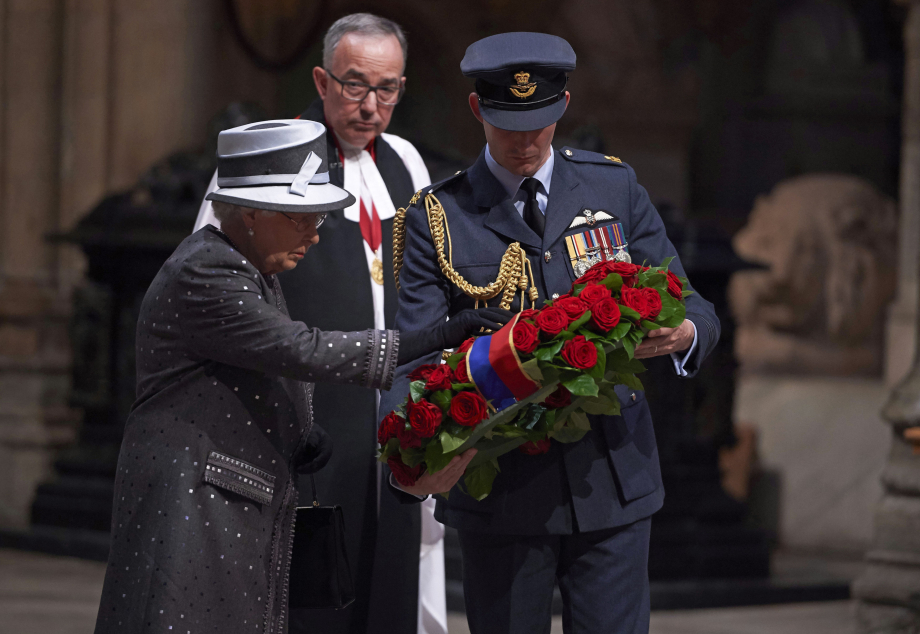
The Battle of the Somme, fought over five months in northern France, was one of the bloodiest of the World War I, which led to over one million dead and wounded on all sides.
The Prince of Wales, The Duchess of Cornwall, The Duke and Duchess of Cambridge and The Duke of Sussex all attended events in France, with The Prince writing the foreword for the Commemorative Programme:
“This centenary provides us with an opportunity to show our deepest respect to our ancestors. Their sacrifice and suffering will never be forgotten.”
The Duke of York attended the National Commemorative Service in Manchester and The Princess Royal joined events in Canada.
Remembrance 2016
The Royal Family undertook a number of engagements to mark Remembrance in 2016, starting with The Duke of Edinburgh and The Duke of Sussex visiting the Field of Remembrance.
The Duke of Cambridge as President of Fields in Trust, visited Kensington Memorial Park to officially mark the dedication of the park by the Royal Borough of London & Chelsea to the Centenary Fields Programme.
Working in partnership with The Royal British Legion, the programme aims to protect parks, playing fields and other recreational spaces in perpetuity to honour the memory of the millions who lost their lives in World War I.
On 11 November, The Duke of Sussex attended the Armistice Day Service at the Armed Forces Memorial at the National Memorial Arboretum, Staffordshire.
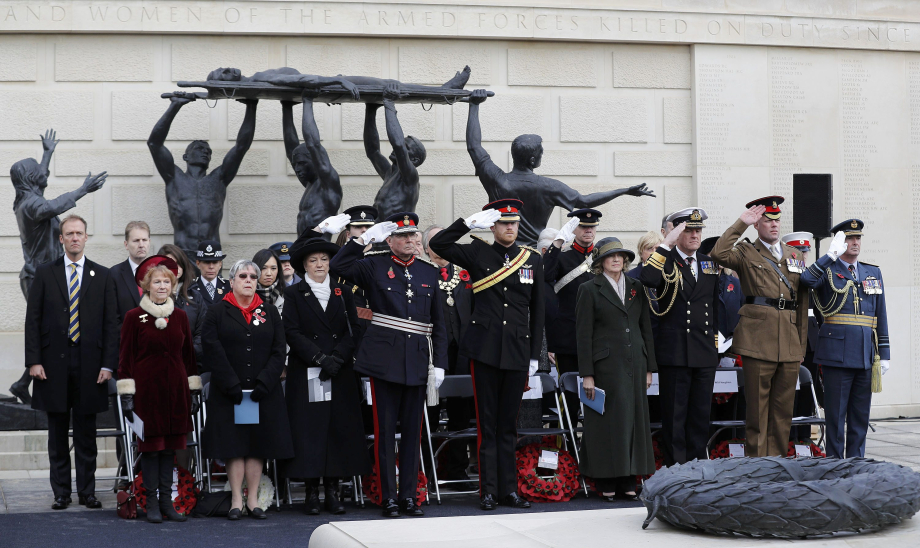
Remembrance Sunday was marked with the traditional wreath laying at the Cenotaph, with The Prince of Wales taking the Salute at the March Past of Veteran and Civilian Organisations.
His Royal Highness, Colonel of the Welsh Guards, then attended a Service at the Guards’ Chapel and laid a Wreath for the Welsh Guards Regimental Sunday.
2017
2017 marked the centenary of a number of major First World War battles, with members of the Royal family attending commemorative events on the continent.
The Battle of Vimy Ridge
The Prince of Wales - on behalf of The Queen - joined by The Duke of Cambridge and The Duke of Sussex, attended a Canadian Commemorative Service and Reception at Vimy Ridge.
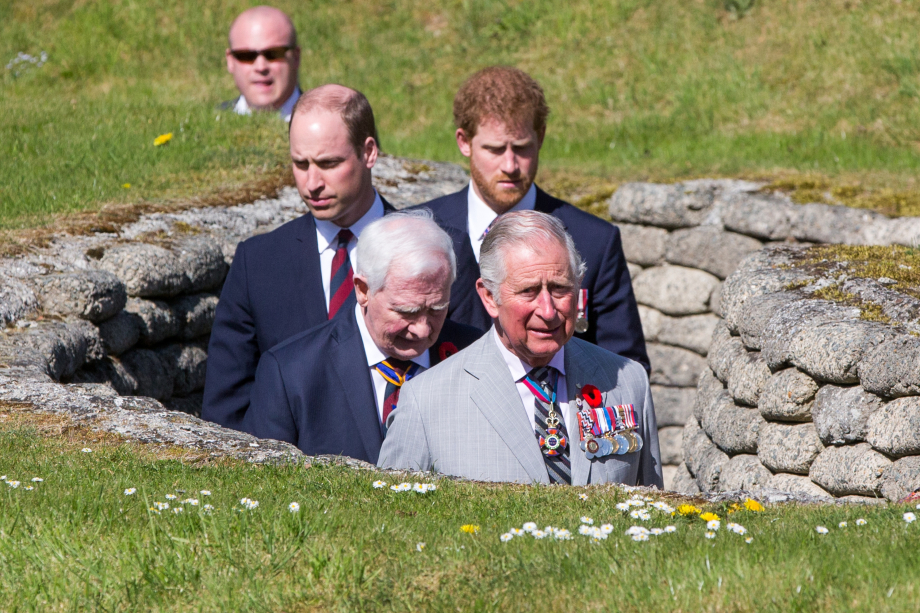
The commemorations honoured the 3589 Canadian soldiers who were killed in action and the 7000 who were wounded. The Canadian National Vimy Memorial is the largest Canadian Memorial to the First World War in Europe and pays homage to those Canadians who made the ultimate sacrifice.
The 100th anniversary of the Commonwealth War Graves Commission
In 2017 the Commonwealth War Graves Commission (CWGC) celebrated its 100th anniversary. The Duke of Kent is the President of the CWGC, who honour the 1.7 million men and women of the Commonwealth forces who died in the First and Second World Wars.
The CWGC commemorates the war dead at 23,000 locations and in more than 150 countries. It received its Royal Charter in 1917 with Edward, Prince of Wales serving as President.
The Battle of Messines Ridge
At the Island of Ireland Peace Park, The Duke of Cambridge, joined by The Taoiseach Enda Kenny, attended the British-Irish Commemorative Service to mark the Centenary of the Battle of Messines Ridge.
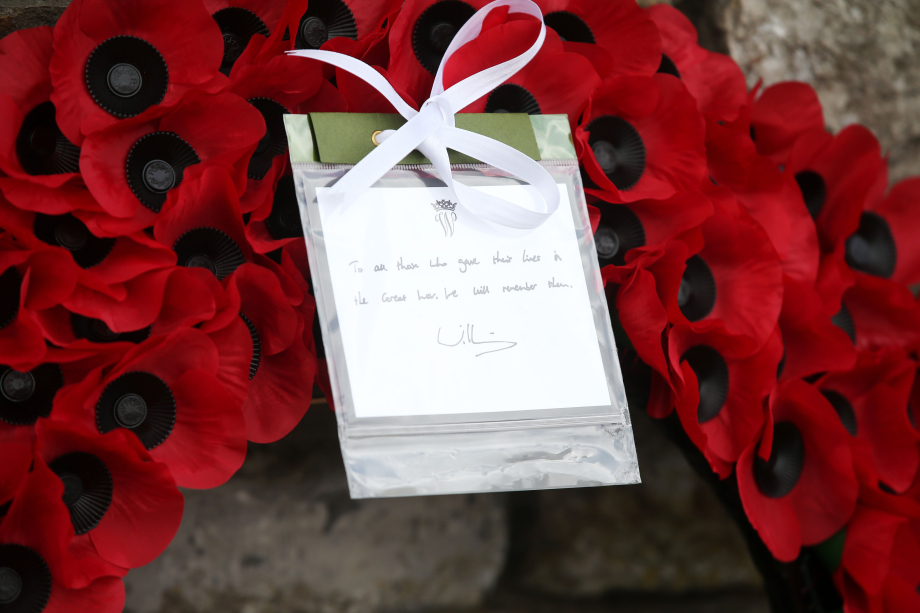
His Royal Highness then travelled to Wytschaete Cemetery, where he paid his respects at the 16th Irish Division Memorial Cross and met family members of those buried in the cemetery, who shared their ancestors’ stories.
The Battle of Passchendaele
Officially known as the Third Battle of Ypres, the Battle of Passchendaele is infamous for the scale of casualties and the horrific conditions. On the 100th anniversary of the start of the Battle in July 2017, The Duke and Duchess of Cambridge attended a Service at the Menin Gate.
On behalf of The Queen, The Prince of Wales attended the UK Passchendaele Centenary Commemorations at Tyne Cot Cemetery, where he was joined by The King and Queen of the Belgians. His Royal Highness was joined the Welsh Commemorations at Langemark.
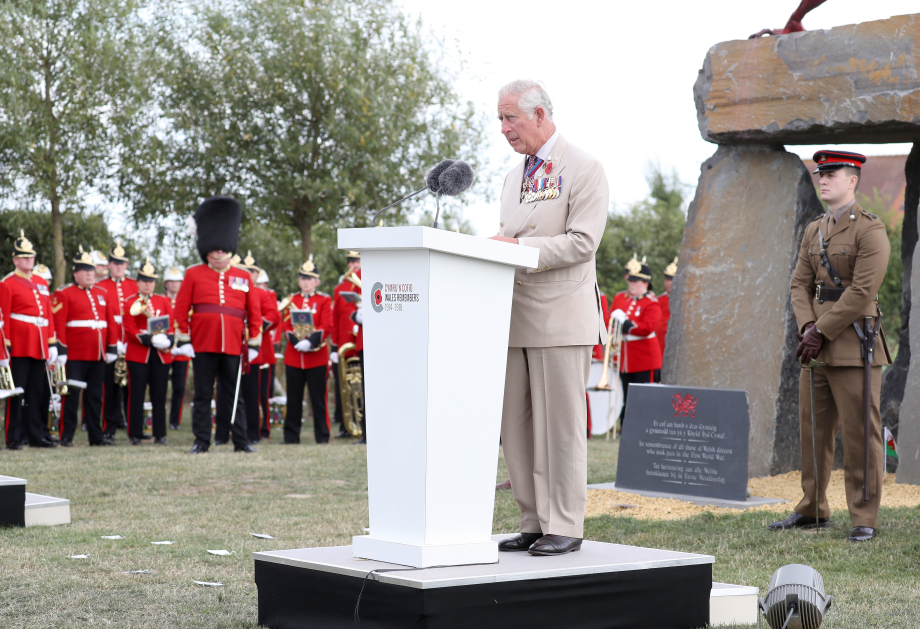
In October The Duke of Cambridge, on behalf of The Queen, attended the New Zealand National Commemoration which marked 100 years since the ‘darkest day’ for New Zealand’s Armed Forces, with the loss of 843 men.
Remembrance 2017
On Remembrance Sunday, The Queen and The Duke of Edinburgh viewed the ceremony from the balcony of the Foreign and Commonwealth Office building, overlooking the Cenotaph. At Her Majesty’s request, a wreath was laid on her behalf by The Prince of Wales.
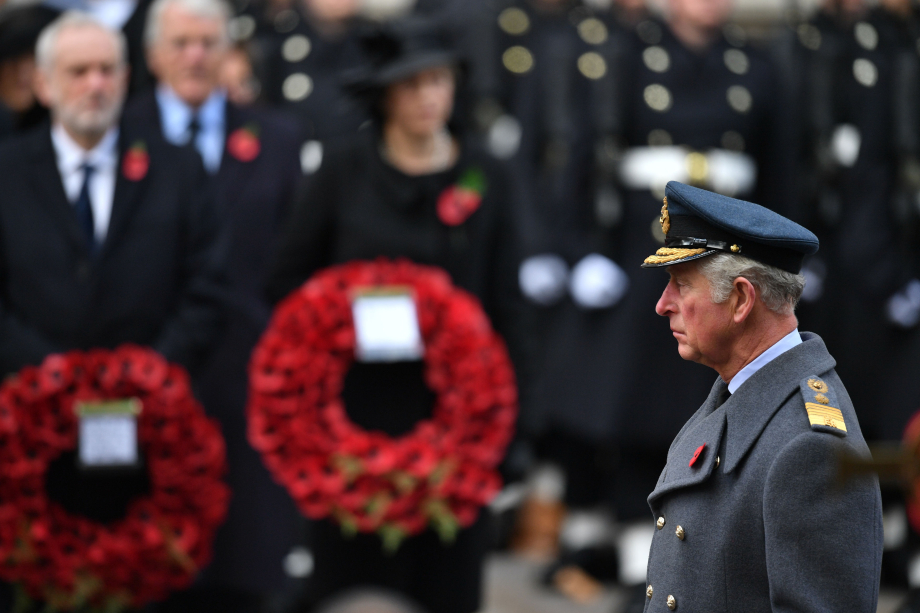
2018
As Commemorations for World War I entered its final year, the attention fell onto the Royal Air Force (RAF) as it celebrated its 100th anniversary.
The centenary of the Royal Air Force
The RAF was formed on 1 April 1918 with the amalgamation of the Royal Flying Corps and the Royal Navy Air Service, an act that was response to the events of World War I.
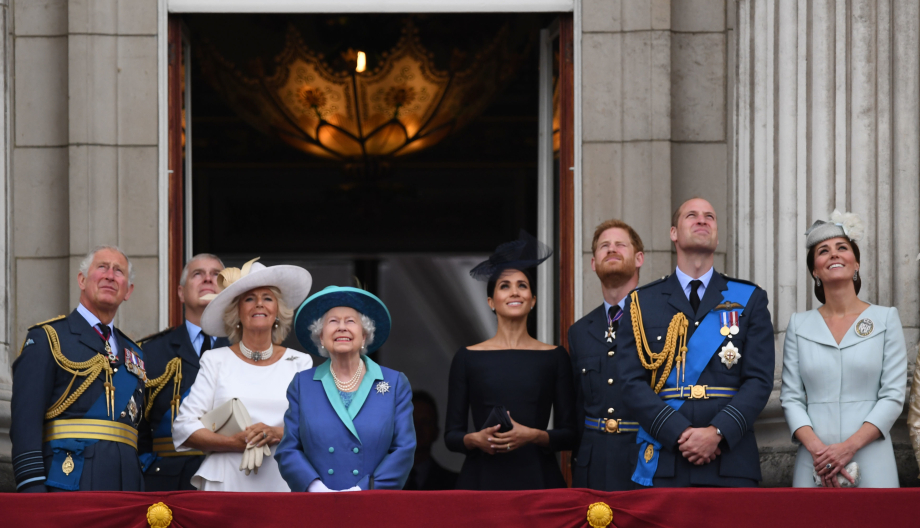
The Royal Family attended a number of events to mark the occasion, starting with a Service at Westminster Abbey. This was followed with The Queen presenting a new Colour to the RAF Regiment and Fly Past at Buckingham Palace.
The Princess Royal, Commandant-in-Chief of the First Aid Nursing Yeomanry (Princess Royal’s Volunteer Corps) unveiled a sculpture that forms part of the UK’s First World War centenary commemorations.
The Battle of Amiens
At Amiens Cathedral, The Duke of Cambridge attended commemorations that marked the centenary of the Battle of Amiens. Starting on the 8 August 1918, the Battle marks the turning point in the First World War, with the Allies advancing over seven miles on the first day.
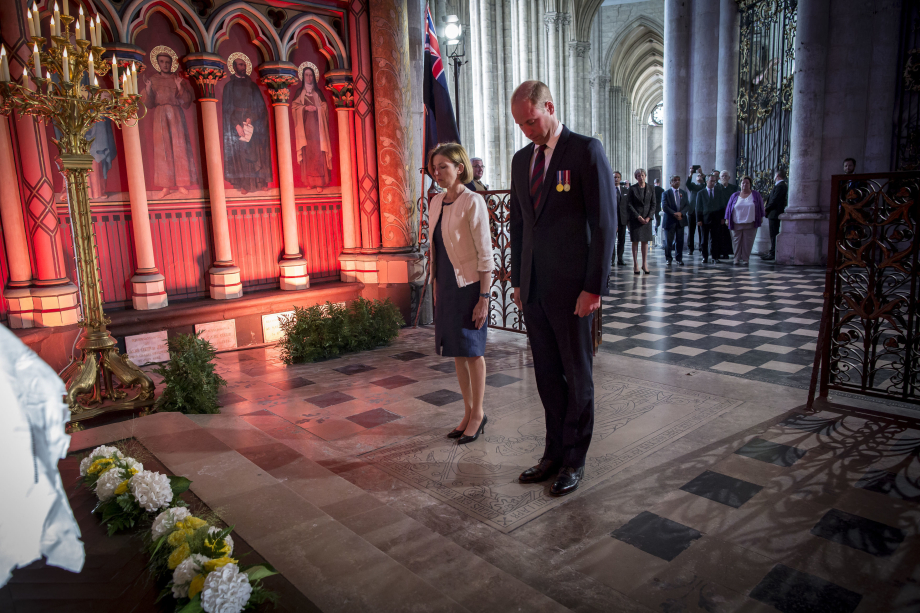
"Today we return to learn more about the experience of those involved during the historic summer of 1918, to honour the fallen of all nations, to commemorate all those who participated in this great endeavour & to celebrate the bonds of friendship which unite our nations."
The Duke of Cambridge
The battle heralded the Hundred Days Offensive and started the path to the Armistice in November 1918.
The Duke of Kent visits War Graves
The Duke of Kent in his role as President of the Commonwealth War Graves Commission visited the following cemeteries to remember those who fought in the First World War: Étaples Military Cemetery, St. Étienne-au-Mont Communal Cemetery, Terlincthun British Cemetery, Wimereux Communal Cemetery.
His Royal Highness also visited Greece to commemorate the centenary of the Armistice of Thessalonica. Signed on 29 September 1918 between Bulgaria and the Allied Powers, it effectively ended Bulgaria’s participation in World War I.
They Shall Not Grow Old
In October, The Duke of Cambridge attended the World Premier of ‘They Shall Not Grow Old’, Peter Jackson’s First World War Film which use uses groundbreaking methods to provide new understanding of the human experience of life at the front.
As 2018 marks the 100 years since the Armistice, Remembrance Sunday will have some special elements this year - read about them here.

